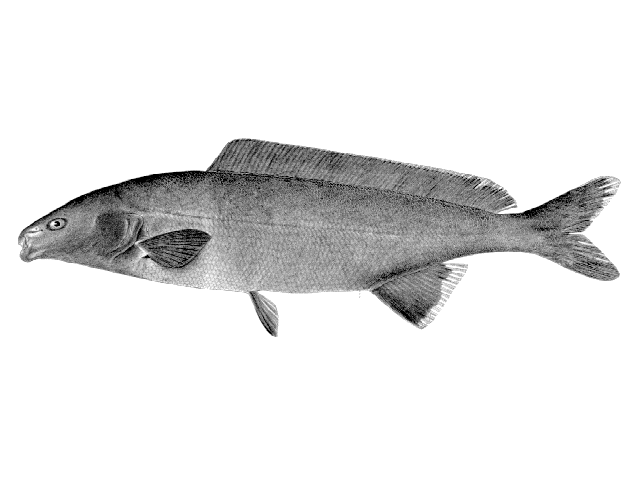| Mormyridae (Elephantfishes) |
| 50 cm TL (male/unsexed); max.weight: 2,000.0 g |
|
demersal; freshwater |
| Africa: Cunene (Ref. 13337, 52193, 120641), Cuvelai (Ref. 120641), Okavango, (upper) Zambezi (Ref. 52193, 120641) and Kafue systems (Ref. 52193). |
|
Dorsal spines (total): -0; Dorsal soft rays (total): 62-68; Anal spines: -0; Anal soft rays: 18-21. Diagnosis: dorsal fin greater than twice length of anal fin; dorsal origin nearer tip of snout than caudal fin base; snout 3-3.2 times in head length; caudal peduncle more than 4 times in standard length (Ref. 52193).
Description: dorsal fin long; snout elongated (Ref. 13337). Body moderately elongated and compressed; dorsal fin extended, origin in advance of pelvics; caudal forked with partially scaled, rounded lobes; head and forebody smoothly decurved; snout extended to about 1/3 of head, tapered; mouth terminal and relatively small; teeth bicuspid, 7—8 in upper jaw, 8—10 in lower; gill slits on sides only (Ref. 52193).
Coloration: greyish brown above, lighter below often with yellowish tinge (Ref. 52193). |
| Prefers quiet stretches of river channels, deep pools and floodplain lagoons with aquatic vegetation; may form small shoals; feeds mainly on insect larvae, shrimps, small snails and small fish (Ref. 52193). Known to move up tributaries when they come down in spate and may breed in newly inundated areas (Ref. 13337). Spawns during the rainy season; females carry up to 7,000 eggs; caught by subsistence fishermen and anglers (Ref. 7248, 52193). |
|
Least Concern (LC); Date assessed: 01 March 2007 Ref. (130435)
|
| harmless |
Source and more info: www.fishbase.org. For personal, classroom, and other internal use only. Not for publication.

